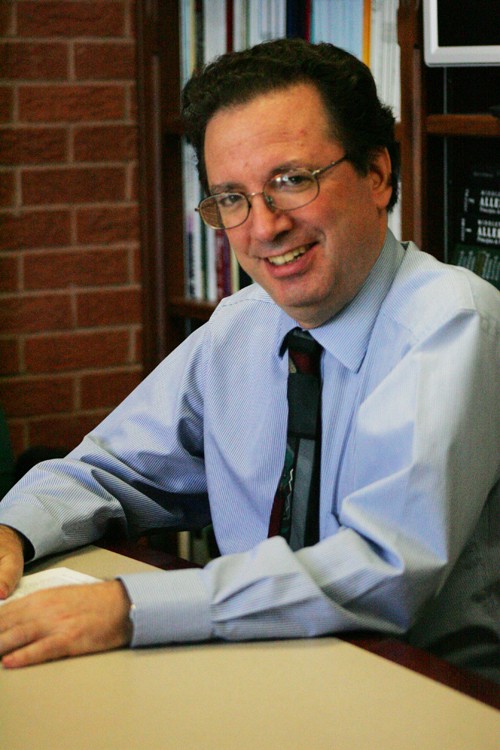Dr. Fernando Martinez, one of the world’s most prestigious researchers in childhood lung diseases, has been named the newest Director of the BIO5 Institute. He has been a part of the UA’s Institute of Collaborative Bioresearch for over 25 years. He is the director of the Arizona Respiratory Center and a pediatrics professor. The Daily Wildcat spoke with him about the past, present and future of his and BIO5’s investigations.
DW: What are you most excited about for BIO5?
FM: What is most exciting about BIO5 is that it combines two elements that are crucial in addressing the most important challenges today in the life sciences. The two elements that it puts together is first, the creativity of the researchers. In the end, science is always going to be the result of creative researchers, who, by knowing what is out there and what has been discovered until now, find new ways in which we interpret the world. That is the basis for all research work — it’s the individual creativity. And examples of that you have in thousands, from Galileo to Einstein, it’s always in the brain and the mind of the investigator of the person with creativity that science works. We are going to continue through BIO5, fostering our best researchers in the life sciences in Arizona.
But the second aspect, which is also important, is that we are going to foster collaboration. You see the challenges we have today are very, very difficult: it is not going to be easy to solve cancer; it’s not going to be easy to find foods that are nutritious but don’t make people obese; it’s not going to be easy to figure out Alzheimer’s and diabetes. And no single person will be able to do that. So you need to put together the creativity of the individual with the power of collaborative work — and that is what BIO5 is all about. It’s not going to be one theme, or one research, it’s going to be many areas of research that BIO5 is kind of the center of. This place is where people find each other to do that kind of work — so creativity and collaboration are our two things that we are going to go forward with.
DW: What experience do you have with BIO5 in the past?
FM: Well, what I do in asthma, which is the theme of my interest, and I always dreamed about being able to participate, to take part in an initiative that took care of these two elements. We have, around the area of asthma, here at the University of Arizona, a very large number of researchers that are all trying to figure out what asthma is all about. Why certain persons develop it and others do not. What triggers the development of the disease? Much like I could have said about cancer, Alzheimer’s, any other disease.
The second aspect that we have is the collaboration. And the same thing on a much larger scale in the whole life sciences is what BIO5 is all about. And that is what made it so attractive for me because it allowed us to project to the whole area of the life sciences what we were already doing.
DW: What do you think BIO5 has that other labs across the country do not?
FM: Well what we have is very honestly the tradition of interdisciplinary research that is part of our signature here at the UA. I have been many places — I have not worked at any place that is not Arizona — but I have visited many places nationally, given talks and discussed with my fellow investigators and scientists, and I have to say that if there is one thing that makes BIO5 so successful, is the spirit of collaboration, working together, supporting each other and that is why such a center exists here.
I don’t know if many other centers — you can probably count them on the fingers of your hand — that put together groups as BIO5 does: plant scientists, basic scientists, different colleges, physicians such as myself and the whole spectrum. The reason is simple; people want to collaborate.
So what makes BIO5? It is not the director; it’s the collaborative spirit, the interdisciplinary spirit of those who work there.
DW: Is there anything you want students on campus to know about BIO5?
FM: It’s very important for the campus community to know that at BIO5 we have programs for undergraduates to not only introduce them to modern life sciences research, but also to give them the opportunity to practice hands on.
The projects that are either going on in our laboratories or through our interactions with researchers, that undergrads can work on.
It’s not only undergrads, by the way, it’s also high school students that also come into our laboratories and we foster their knowledge, together with their teachers, about what the modern biological sciences are.
My dream is that a lot of the undergrads that truly would like to become biological scientists, could, through BIO5, get an idea of what is being done in the life sciences. And that be the first step to them becoming one of the scientists that could solve cancer in the future. And that is one of my best cherished dreams.









